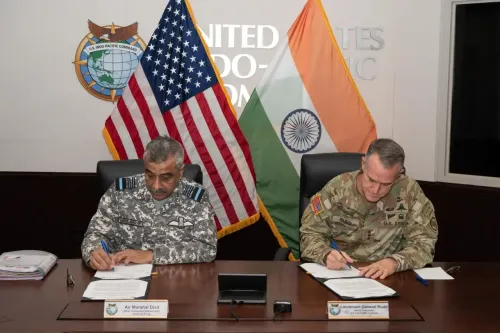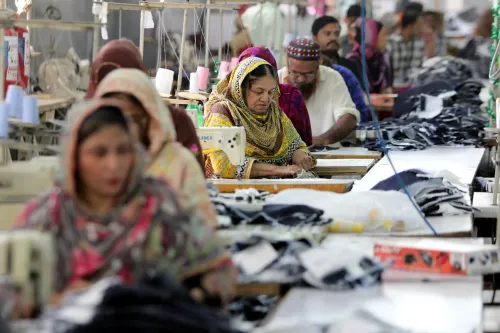Is TTP the Unrivaled Force in Pakistan's Militant Scene?

Synopsis
Key Takeaways
- TTP maintains a dominant position in Pakistan's militant scene.
- JuA is actively seeking to assert its influence through strategic alliances.
- Ittehad Mujahideen Pakistan (IMP) is emerging as a significant contender in the conflict.
- Financial stability and alliances are crucial for the sustainability of militant groups.
- The conflict highlights the evolving nature of militancy in Pakistan.
Islamabad, Nov 1 (NationPress) A renewed conflict between Jamaat-ul-Ahrar (JuA) and Tehreek-e-Taliban Pakistan (TTP) within Pakistan's militant ecosystem extends beyond leadership changes into operational disagreements. The JuA frequently claims responsibility for attacks, which the TTP publicly refutes, according to a report issued on Saturday.
The report points out that JuA was established in 2014 by Omar Khalid Khorasani, who separated from the TTP due to a fallout with the then-leader, Mullah Fazlullah.
“Within Pakistan's militant scene, Tehreek-e-Taliban Pakistan (TTP) has positioned itself as the leading group. This dominance is largely attributed to its quasi-governance model, featuring a centralized leadership paired with a decentralized operational framework. Additionally, a steady flow of finances and a wide-ranging alliance network with over 90 factions have rendered the TTP the most lethal, dynamic, and resilient organization in Pakistan,” the report from The Diplomat elaborated.
“Nevertheless, this strength is increasingly challenged by rising tensions between the TTP and JuA, with the latter keen on forging its own path. Concurrently, the emergent Ittehad Mujahideen Pakistan (IMP) is aligning with JuA to undermine TTP's authority,” it continued.
The report highlights that following the death of Omar Khalid Khorasani, JuA lacks a leader, making it improbable for any major JuA affiliate to secure a significant role within the TTP hierarchy.
“JuA is now seeking key positions,” stated Arshad Mohmand, a journalist with Voice of America.
Mohmand further noted that amidst this evolving situation, JuA is employing a “hedging strategy” between TTP and its emerging rival, Ittehad Mujahideen Pakistan (IMP).
“In April 2024, the IMP came forward as a new faction within Pakistan's militant landscape. The group is composed of three factions: Lashkar-e-Islam, Hafiz Gul Bahadur, and Harakat Inqilab Islami Pakistan (HIIP), with the Gul Bahadur faction leading the charge. This newly formed alliance has been responsible for several high-profile attacks across Khyber Pakhtunkhwa Province, focusing particularly on the southern regions,” the report emphasized.
“JuA is progressively expanding its network of alliances, reaching from the Chitral district of Khyber Pakhtunkhwa to Karachi in Sindh. On October 25, 30 affiliates from Chitral joined the JuA, a move primarily driven by the intent to diminish TTP's stronghold in the southern districts of Khyber Pakhtunkhwa, where JuA aims to reinforce its position,” the report concluded.









